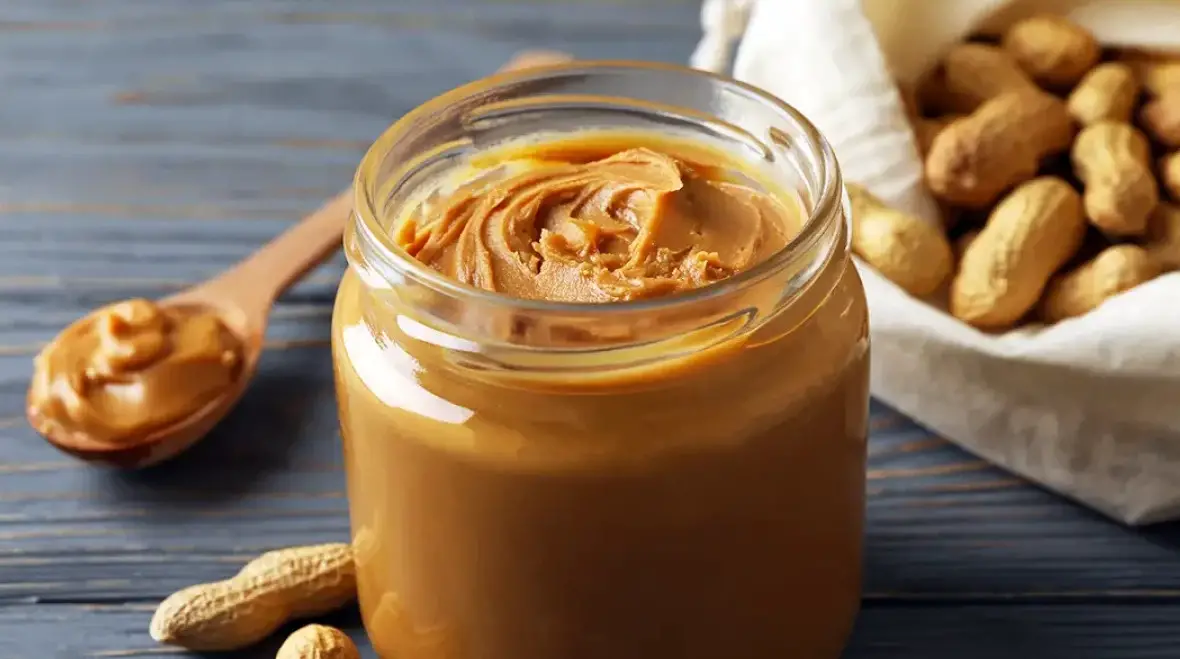Living with diabetes requires careful attention to food choices, particularly when it comes to balancing carbohydrates, proteins, and healthy fats. Among the many foods people wonder about, peanut butter often stands out. It is creamy, versatile, and loved worldwide, but the question remains: is peanut butter good for diabetics? Understanding how this food fits into a diabetic diet involves looking closely at its nutritional value, health benefits, and possible drawbacks.
This article explores peanut butter in depth, providing evidence-based insights for those managing diabetes. You will learn how it impacts blood sugar levels, the role of its nutrients, and practical ways to incorporate it into a balanced diet.
Understanding Peanut Butter and Its Nutritional Profile

Peanut butter is made primarily from ground, roasted peanuts. Depending on the brand, it may also include added salt, sugar, or oils. The nutritional composition of natural peanut butter is what makes it interesting for people with diabetes. It is naturally rich in protein and healthy monounsaturated fats while being relatively low in carbohydrates.
On average, two tablespoons of peanut butter provide about 190 calories, 16 grams of fat, 7 grams of protein, and 6 grams of carbohydrates, of which around 2 grams are fiber. These numbers matter for someone with diabetes because carbohydrate intake directly affects blood glucose levels. Peanut butter’s protein and fat content help slow digestion, preventing sudden spikes in blood sugar.
However, not all peanut butters are created equal. Some varieties contain added sugars and hydrogenated oils that can alter their nutritional quality. For diabetics, choosing natural or unsweetened peanut butter is generally the better option, since it avoids unnecessary sugars that can raise glucose levels.
The Glycemic Index of Peanut Butter
The glycemic index (GI) measures how quickly a food raises blood sugar after consumption. Foods with a high GI cause rapid spikes, while those with a low GI produce slower, steadier increases. Peanut butter has a very low GI, typically less than 20, which means it has minimal impact on blood glucose levels.
This makes it an excellent candidate for diabetic diets. When paired with high-carbohydrate foods, peanut butter can even lower the overall glycemic load of a meal. For example, spreading peanut butter on whole-grain bread reduces the speed at which glucose enters the bloodstream compared to eating the bread alone.
Understanding this concept helps people with diabetes use peanut butter strategically. It is not only about eating it as a snack but also about using it in combination with other foods to stabilize blood sugar.
Peanut Butter and Blood Sugar Control
Managing diabetes revolves around controlling blood sugar fluctuations. The combination of protein, fat, and fiber in peanut butter contributes to better satiety and slower digestion. When eaten in moderation, peanut butter can help keep glucose levels more stable.
Research has suggested that nuts and nut butters are associated with improved insulin sensitivity. This means the body becomes more effective at using insulin to regulate blood sugar. For type 2 diabetics in particular, this effect is highly valuable because insulin resistance is a key challenge of the condition.
That said, portion control remains essential. Peanut butter is calorie-dense, and excessive consumption could lead to weight gain, which can worsen insulin resistance. A moderate serving, typically one to two tablespoons, is enough to enjoy the benefits without the drawbacks.
The Role of Healthy Fats in Peanut Butter
Peanut butter is rich in monounsaturated and polyunsaturated fats, often called “good fats.” These fats play an important role in heart health, which is particularly relevant for diabetics since they face an increased risk of cardiovascular disease.
Monounsaturated fats, like those in peanut butter, can help lower LDL cholesterol (bad cholesterol) while raising HDL cholesterol (good cholesterol). This balance reduces plaque buildup in the arteries and supports overall cardiovascular health. Polyunsaturated fats, though present in smaller amounts, also contribute to reducing inflammation in the body.
Including sources of healthy fats like peanut butter in a diabetic diet can therefore provide a double benefit: supporting heart health while also helping to regulate blood sugar. However, the choice of peanut butter brand remains crucial, as varieties with added trans fats undermine these benefits.
Protein in Peanut Butter and Its Importance for Diabetics
Protein is vital for repairing tissues, building muscle, and supporting metabolic health. For people with diabetes, protein also has the added advantage of slowing down digestion and reducing post-meal blood sugar spikes.
Peanut butter offers about 7 grams of protein per serving, which makes it a useful plant-based protein source. When paired with other proteins like Greek yogurt or eggs, it helps create meals that are balanced and more satisfying. This satiety effect reduces the temptation to snack on high-carbohydrate foods later in the day, indirectly supporting better glucose control.
For vegetarians or those seeking to cut back on meat consumption, peanut butter can serve as a versatile protein alternative. It can be used in smoothies, oatmeal, or paired with fruit to create snacks that balance sweetness with protein and fat.
Peanut Butter and Weight Management in Diabetes
Weight management is a key aspect of controlling type 2 diabetes. Excess body fat, especially around the abdomen, increases insulin resistance. Peanut butter can play a role in weight management because of its ability to promote satiety.
Eating peanut butter may help people feel full for longer, reducing overall calorie intake throughout the day. Studies have shown that diets including nuts are associated with lower rates of obesity and better long-term weight management outcomes.
Of course, moderation is critical. While peanut butter can support weight control when consumed sensibly, overeating it can quickly add excess calories. The key is balancing peanut butter with other nutrient-dense foods in the diet rather than viewing it as a standalone solution.
Potential Risks of Peanut Butter for Diabetics
While peanut butter offers many advantages, there are potential downsides for diabetics to be aware of. The most common concern is added sugar. Many commercial peanut butter brands include sweeteners to enhance taste, which increases carbohydrate content and can contribute to blood sugar spikes.
Another issue is sodium. Some peanut butters are high in salt, which can affect blood pressure. Since diabetics already face a higher risk of heart disease, limiting sodium intake is important. Choosing unsalted varieties is a simple way to reduce this risk.
Lastly, peanut butter is calorie-dense. For people struggling with weight management, overconsumption could hinder progress. This is not a reason to avoid peanut butter altogether but rather to use it in controlled portions.
Choosing the Right Peanut Butter for Diabetes
Not all peanut butter is equally suitable for diabetics. Natural peanut butter, which contains only peanuts and possibly a small amount of salt, is generally the best option. These varieties avoid added sugars and hydrogenated oils that diminish nutritional quality.
Reading labels carefully is essential. Look for peanut butters with minimal ingredients, ideally just peanuts and salt. Organic and unsweetened versions provide the cleanest nutritional profile. Some brands also offer powdered peanut butter, which has less fat and fewer calories while retaining protein, making it a good choice for weight management.
Texture also plays a role in preference. Creamy and crunchy peanut butters have similar nutritional values, so the choice depends on personal taste rather than health benefits. What matters most is keeping added ingredients to a minimum.
Best Ways to Incorporate Peanut Butter into a Diabetic Diet
Peanut butter can be used in many creative and healthy ways within a diabetic meal plan. Spreading it on whole-grain bread or pairing it with apple slices creates a balanced snack that combines protein, fiber, and healthy fat. Adding it to smoothies or oatmeal enhances flavor and provides extra satiety.
For breakfast, peanut butter can be combined with chia seeds or flaxseeds for an additional boost of fiber and omega-3 fatty acids. As part of lunch or dinner, it can be included in savory dishes such as peanut sauces for stir-fries or salads, offering a flavorful yet balanced option.
The key to these combinations is balance. Pairing peanut butter with high-fiber fruits, vegetables, or whole grains creates meals that keep blood sugar steady. Avoiding combinations with sugary foods, like sweetened jams or processed white bread, ensures peanut butter remains a healthy choice.
Comparing Peanut Butter with Other Nut Butters
Almond butter, cashew butter, and sunflower seed butter are often compared to peanut butter for their health benefits. Almond butter contains slightly more fiber and vitamin E, which supports skin and heart health. Cashew butter has a creamier texture but tends to be lower in fiber. Sunflower seed butter is a good option for those with peanut allergies.
From a diabetic perspective, peanut butter holds its own against these alternatives. It provides a strong balance of protein, fat, and fiber while being more widely available and often more affordable. Almond butter may have a slight edge nutritionally, but peanut butter remains an excellent option when consumed wisely.
The choice between these spreads may ultimately come down to taste preferences, budget, and specific nutrient priorities. For diabetics, the most important factor is choosing versions with minimal added sugars and oils, regardless of the nut source.
Long-Term Health Benefits of Peanut Butter for Diabetics
Including peanut butter regularly in a balanced diabetic diet may offer long-term advantages beyond blood sugar control. Its healthy fats and antioxidants contribute to lower inflammation, which is significant because chronic inflammation is linked to complications such as heart disease and neuropathy in diabetes.
Peanut butter also provides magnesium, a mineral important for insulin sensitivity and blood sugar regulation. Adequate magnesium intake has been linked to a lower risk of developing type 2 diabetes, suggesting that peanut butter may provide preventative benefits as well.
By supporting cardiovascular health, aiding in weight management, and stabilizing glucose levels, peanut butter can be considered a valuable dietary ally for people with diabetes when consumed responsibly.
Practical Tips for Eating Peanut Butter Safely
The most practical approach for diabetics is to treat peanut butter as a nutrient-dense food that fits into a larger balanced meal plan. Portion size matters most. Measuring out one or two tablespoons instead of eating straight from the jar helps maintain control.
Pairing peanut butter with high-fiber foods such as whole-grain toast, celery, or berries enhances its benefits. Avoid combining it with sugary snacks or refined carbohydrates, as this offsets its low glycemic impact. Choosing unsweetened and minimally processed peanut butter ensures that you are getting the healthiest version possible.
Consistency in diet is also important. While peanut butter can be enjoyed daily, variety in nutrient sources is key to long-term health. Balancing it with other proteins, fats, and whole foods creates a diet that supports both diabetes management and overall well-being.
FAQs about Peanut Butter and Diabetes
Is peanut butter safe for people with type 2 diabetes?
Yes, peanut butter is safe for people with type 2 diabetes when consumed in moderation. Its low glycemic index and healthy fats make it a supportive food for blood sugar management.
Can peanut butter lower blood sugar levels?
Peanut butter does not directly lower blood sugar, but it helps prevent sharp spikes by slowing digestion when paired with carbohydrates. This stabilizing effect makes it a helpful addition to meals.
How much peanut butter can a diabetic eat per day?
Most nutritionists recommend one to two tablespoons per day as part of a balanced diet. This amount provides the benefits without adding excessive calories.
Is natural peanut butter better for diabetics than regular brands?
Yes, natural peanut butter is generally better because it avoids added sugars and hydrogenated oils that can negatively affect blood sugar and heart health.
Can peanut butter help with weight loss in diabetes?
Yes, in moderation, peanut butter supports satiety and can reduce overall calorie intake, making it helpful for weight management, which is crucial for controlling type 2 diabetes.
Final Thoughts
So, is peanut butter good for diabetics? The answer is yes, provided it is eaten in moderation and chosen wisely. With its low glycemic index, rich protein, and healthy fats, peanut butter supports blood sugar control, weight management, and heart health. However, portion control and selecting natural varieties are essential to reap the benefits without unintended drawbacks.
For individuals with diabetes, peanut butter can be a satisfying and nutritious addition to the diet. When paired with whole foods and enjoyed as part of a balanced eating plan, it proves not only safe but also beneficial.
Disclaimer: This article is intended for informational purposes only and should not be considered medical advice. People with diabetes should consult a healthcare professional or registered dietitian before making significant changes to their diet.



